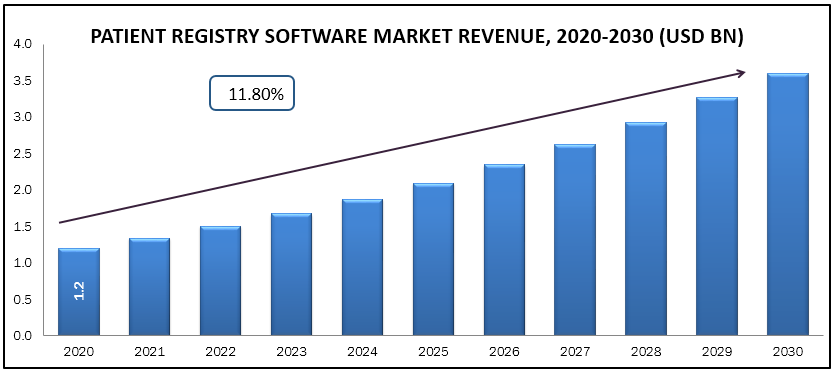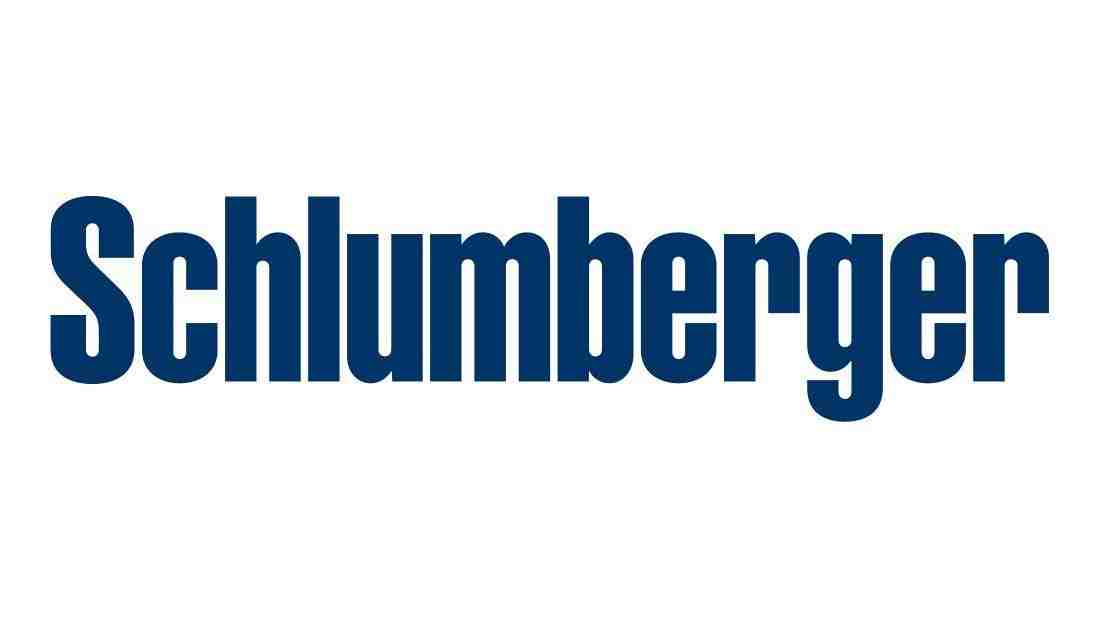Patient Registry Software Market size is expected to reach USD 3.6 billion by 2030, in comparison to the market valued at USD 1.2 billion in 2020 with the CAGR of 11.8% during the forecast period. Patient registry software is used to create a database for the purpose of collecting data related to patients. These software solutions capture patient’s data which includes the socio-demographic information, medical history as well as changes in the patient’s condition over time so that preventive healthcare and treatment can be provided. Patient registry software allows physicians and other healthcare providers to access the central patient registry through the internet or intranet from computers at the hospital serving as a central point of access. Moreover, it provides features such alerts or notifications about tests or procedures that need to be conducted for each patient and tracking the progress to better offer treatment to the patients with chronic diseases. Many healthcare service programs are being initiated by the governments of developed and developing countries across the world which is effecting favorably on the patient registry software market. Furthermore, rising geriatric population and growing use of electronic health records (EHR) is driving the patient registry software market.
Market Segmentation:
On the basis of database type, patient registry software market is segmented into product registries, health service registries and disease registries. Based on product type, the market is bifurcated into integrated software and standalone software. According to pricing model, the market is divided into subscription models and ownership models. By deployment model, the market is divided into on-premise and cloud-based. On the basis of functionality, the patient registry software market is classified into population health management (PHM), patient care management, health information exchange (HIE), point of care, product outcome evaluation, medical research and clinical studies. By end user, the market is divided into government organizations & third-party administrators (TPAs), hospitals, private payers, pharmaceutical, biotechnology, medical device companies and research centers. Geographic breakdown of the region includes North America, Europe, Asia-Pacific, and RoW.
Market Dynamics and Factors:
Growing adoption of electronic health records (EHR), rising prevalence of chronic diseases and increasing government initiatives are the key drivers boosting the growth of patient registry software market. According to the World Health Organization (WHO) in 2016, steady growth in the adoption of national electronic health record (EHR) systems was observed over the past 15 years and 50% of upper-middle and high-income countries have adopted national EHR systems. Moreover, many healthcare schemes by governments such as Rashtriya Bal Swasthya Karyakram (RBSK), Pradhan Mantri Swasthya Suraksha Yojana (PMSSY) & Ayushman Bharat Yojana in India and State Children's Health Insurance Program (SCHIP) in U.S. are positively contributing to the patient registry software market growth. Furthermore, since the world is suffering through COVID-19 pandemic, quick and accurate data collection and analysis is needed during an outbreak. This opens immense opportunities for the patient registry software market. However, concerns relating to privacy breaches and issues, like data theft are limiting the patient registry software market to some extent.
Geographic Analysis:
North America dominated the global patient registry software market and accounted a major share in terms of revenue share. The U.S. held market share of USD 308.16 million in 2018. Increasing government initiatives in order to experience progress in healthcare services is propelling the growth of the market in this region. For instance, as a part of the American Recovery and Reinvestment Act, all public and private healthcare providers were required to adopt and demonstrate the use of EHR by January, 2014. Asia-Pacific is estimated to be the fastest-growing region in the global patient registry software market owing to the growing support of the government and technological growth in healthcare sector.
Competitive Scenario:
Some of the major players of global patient registry software market are M2S, Inc., Phytel, Inc., Velos, Inc., Liaison Technologies, ArborMetrix, Inc., Dacima Software, Inc., ImageTrend, Inc., Syneos Health, Inc., McKesson Corporation, ifa systems AG and INC Research Holdings, Inc.
Patient Registry Software Market Report Scope
| Report Attribute | Details |
| Analysis Period | 2020–2030 |
| Base Year | 2021 |
| Forecast Period | 2022–2030 |
| Market Size Estimation | Billion (USD) |
| Growth Rate (CAGR%) | 11.8 % |
|
| By Database Type (Product Registries, Health Service Registries, and Disease Registries), By Product Type (Integrated Software and Standalone Software), By Pricing Model (Subscription Models and Ownership Models), By Deployment Model (On-premise and Cloud-based), By Functionality (Population Health Management (PHM), Patient Care Management, Health Information Exchange (HIE), Point of Care, Product Outcome Evaluation, Medical Research |
| Geographical Segmentation | North America (U.S., Canada, Mexico) Europe (UK, Germany, Italy, France, Rest of Europe), Asia-Pacific (China, Japan, India, Australia, Rest of APAC), South America (Brazil, Argentina, Rest of SA), MEA (UAE, Saudi Arabia, South Africa) |
| Key Companies Profiled | M2S, Inc., Phytel, Inc., Velos, Inc., Liaison Technologies, ArborMetrix, Inc., Dacima Software, Inc., ImageTrend, Inc., Syneos Health, Inc., McKesson Corporation, ifa systems AG and INC Research Holdings, Inc. |
|
|
|







